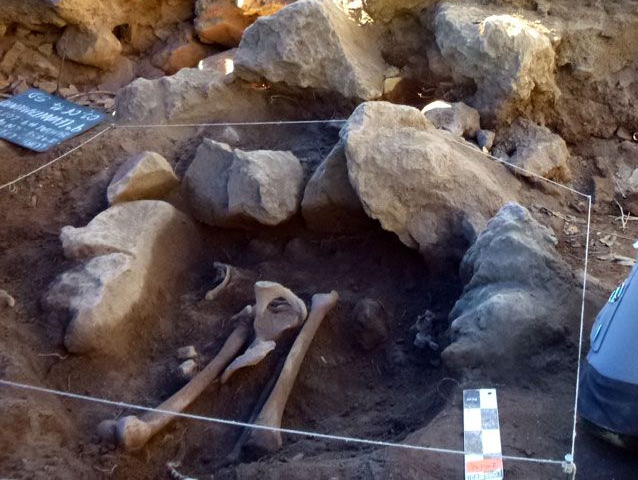As Appearing in Heritage Daily | April 2014

THE SUBLIME SOUNDS OF A JINGLING RATTLE SILENCED FOR MORE THAN 500 YEARS HELPS TELL THE STORY OF AN ANCIENT CIVILIZATION IN WESTERN MEXICO AND TIES TOGETHER MORE THAN SEVEN YEARS OF DISCOVERY BY A TEAM OF RESEARCHERS LED BY A COLORADO STATE UNIVERSITY ARCHAEOLOGIST.
The copper and bronze rattle was discovered in an ancient cemetery by Chris Fisher, associate professor of anthropology, and a team at Angamuco, a pre-Hispanic city in the Mexican state of Michoacán and associated with the ancient Purépecha culture of western Mexico. Fisher’s team also discovered the complete skeletal remains of 37 individuals and many partial burials of both genders ranging from infants to adults.
Listen to rattle – Click Here
“The discovery of this mortuary complex provides a unique lens through which we can examine changes in health, status and well-being during a period of rapid social change that is associated with the formation of the Purépecha Empire,” Fisher said.
“This is the key to putting all of this research together – like almost eight years of survey and excavation. It’s a representative sample of the population that can be dated and examined, so it really completes our view of this ancient civilization and the occupation of the site.”
Ceramic vessels, copper-bronze rattles and other artifacts found with the burials indicate the cemetery dates primarily to the middle to late Postclassic period (A.D. 1000-1520).
“This is a period of reorganization and social change on the cusp of the late Postclassic Purépecha Empire,” said Fisher, project director. “Individuals recovered represent an impressive cross-section of the ancient Purépecha population at the city during a period of dramatic social and environmental change.”
The discovery of the cemetery provides new insights into the funerary practices of the ancient Purépecha. The burials were discovered within a large plaza dominated by a traditional Purépecha keyhole-shaped pyramid and associated large altars. Most of the burials – numerous incomplete skeletons, along with evidence of cremations – were discovered in “flexed” positions either in formal small tombs or in pits.
“Many of the remains exhibit pathologies and stress indicators consistent with social stratification and possible environmental change,” said Cinthya Cardenas, lead bioarchaeologist and a graduate student in the Department of Anthropology at the Universidad Autonoma de Yucatán (UADY). “The minimum number of remains documented at the Angamuco cemetery this season – including complete and partial inhumations – represents 61.”
Though the contents of the ceramic vessels discovered during excavation are in the process of being systematically tested at least one contains the remains of small fish. The excavations are part of “Legacies of Resilience: The Lake Pátzcuaro Basin Archaeological Project,” which is a long-term multidisciplinary effort to understand the development of complex societies in the region.
Angamuco was first documented in 2007 by the Legacies project and has undergone over three years of intensive ground survey that has documented over 7,000 ancient buildings and landscape features. In addition Fisher, with Colorado State University Geography Professor Stephen Leisz, used ground-breaking LiDAR (Light Detection and Ranging) technology to help map the city from the air. The LiDAR survey revealed more than 20,000 architectural features and a highly organized city that is far more complex and included more people than previous research in the region has suggested.
CONTEMPORARIES, RIVALS OF AZTECS
The Purépecha were contemporaries and rivals of the Aztecs in central Mexico. The Purépecha were considered the most advanced metalsmiths and created some of the finest crafts in Mexico. Like the Aztec, the Purépecha Empire was destroyed following European occupation in the early 1500s.
The ancient city, which covers more than 12 square kilometers, is located at 7,000 feet above sea level, four hours northwest of Mexico City.
This work is part of “Legacies of Resilience: The Lake Pátzcuaro Basin Archaeology Project,” a long-term program of research by archaeologists, geologists and geographers from the United States and Mexico that is funded by a grant to Fisher and Leisz from the National Science Foundation, a grant to Fisher from the National Geographic Society, and private donors. The Legacies project is based at Colorado State University and the Centro de Estudios Mexicanos y Centroamericanos (CEMCA) in Mexico City.